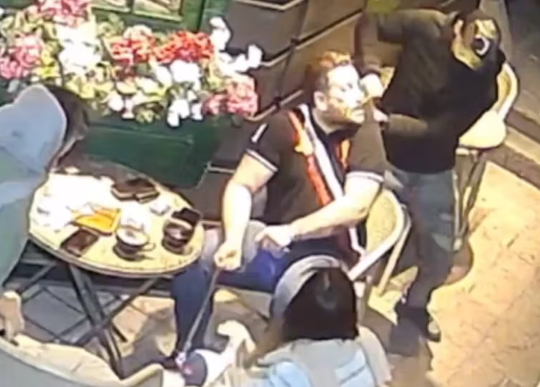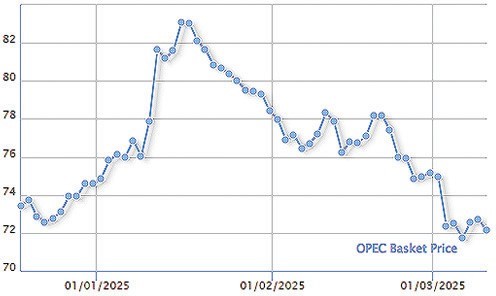October 14, 2022

The six-year-long frostiness in relations between Tajikistan and Iran appears to have come to an end under President Raisi, one of the few concrete policy developments he can point to after 14 months in office. But it looks like he just finished something his predecessor started.
The frost melted away May 29, when Tajik President Emomali Rahmon paid an official visit to Tehran during which he and his hosts pledged to improve diplomatic and trade relations. (The Tajik political establishment like the political establishments in other Central Asia states is largely comprised of former Communists who easily converted to a non-communist leadership.)

The two countries had started off well in 1991 when the Soviet Union broke apart and Tajikistan became independent. The Tajik language is a variant of Persian (as is Dari in Afghanistan) and Tajikistan quickly became close to Iran.
Relations fell into the nether regions, however, in December 2016 when Tehran invited exiled Tajik dissident Muhiddin Kabiri, a Shiite cleric, to attend a state-sponsored conference entitled “Islamic Revival.” Kabiri even met with Supreme Leader Ali Khamenehi, which Tajikistan took as a direct affront. The Tajik Foreign Ministry sent a diplomatic note to Iran registering its irritation that the “head of a terrorist party suspected of mounting an attempted overthrow of the government” had been invited to the conference.
Things only got worse from there. The Tajik customs service introduced restrictions on the import of food products from Iran. Dry leaf tea, poultry and other goods were ruled unacceptable for their allegedly poor quality. In July 2016, the Tajik office of Iran’s Khomeini Imdod Committee, an international development fund, was pressured into closing its doors. All direct air routes were suspended and the parents of young people pursuing their studies in Iran were pressured to bring their children home.
Then Tajikistan seized all the assets in Tajikistan belonging to Babak Zanjani, an Iranian who had fronted the sale of Iranian oil to evade sanctions and had parked much of the money gained in Tajikistan.
To compound matters, Tajikistan began from that point onward to aggressively cultivate relations with one of Iran’s most despised foes: Saudi Arabia. The apparent aim of the charm offensive was seemingly to secure investment and aid. This plan yielded little fruit, though. While Riyadh offered money to support educational projects, this nowhere near matched Dushanbe’s needs and expectations.
As recently as 2020, Tajikistan was flinging bitter accusations at Tehran. In one documentary aired on state television that year, Iran was accused of funding militant activity in Tajikistan. Around the same period, dozens of graduates of Iranian universities were sentenced to lengthy prison terms, according to the Eurasianet news website.
But all that appeared to be history when officials from the two countries signed 17 agreements May 30 on cooperation in areas including trade, transportation, energy, education and tourism. One key breakthrough was a decision to resume direct flights between Tehran and Dushanbe.
Iranian state media have attributed the reset to President Raisi. Speaking to the state news agency, Ali-Ashraf Mojtahed Shabestari, Iran’s first ambassador to Tajikistan in the 1990s, argued that “Raisi’s decision to choose Tajikistan as the destination of his first presidential trip [to the attend the Shanghai Cooperation Organization summit in August 2021] was of high significance for Tajiks.”
Last month, the Iranian armed forces chief of staff, Major General Mohammad Bagheri, traveled to Dushanbe with pledges to enhance bilateral security cooperation. During his visit, Bagheri and his Tajik counterpart attended the opening of a facility for the production of Iranian-designed Ababil-2 tactical drones. The unmanned aerial vehicle is described by US military sources as a single-engine, long-range, low-technology drone that is mainly used as a target drone for training anti-aircraft defense crews, but which can also be deployed for “rudimentary surveillance capabilities” and as “a loitering munition.”
On his trip to Tehran, President Rahmon not only met President Raisi but also was awarded an audience with the Supreme Leader, a key development considering that the Leader’s meeting with the dissident cleric six years ago is what caused Tajikistan’s fury.
The change in policy appears to have begun more than a year ago under President Hassan Rohani. The Customs Administration of Iran recently reported that in the last Persian year (March 2021-March 2022) Iranian imports from Tajikistan rose 439 percent compared to the previous year while Iranian exports to Tajikistan rose 459 percent.
Tajikistan has for most of its post-independence history looked first and foremost to Russia as its main security guarantor. Russia has several thousand troops deployed at a series of military outposts across Tajikistan, although there is speculation that a substantial number of those men have been redeployed as a result of the war in Ukraine.
Moscow’s precipitous retreat into isolationism following the start of its invasion and the anticipated contraction in its economy caused by sanctions seems to be giving countries in Central Asia, Tajikistan among them, new thoughts about diversifying defense and trade relations.
Eurasianet said, “The nod to security cooperation with Tehran is particularly surprising, though, in light of what Tajikistan has been saying about Iran.”























